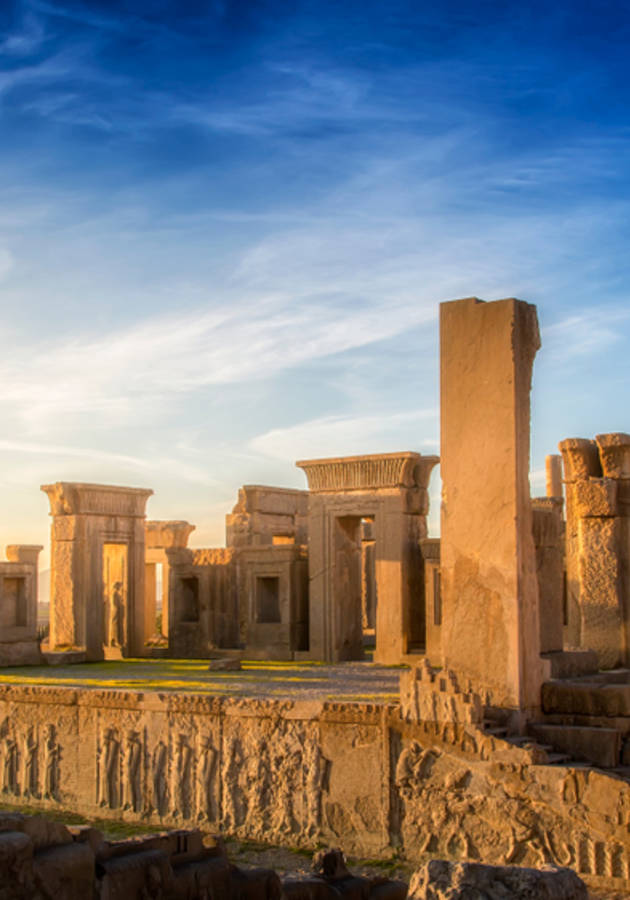Most Indians nowadays still feel like the truth about the British “occupation” is somewhat distorted. Also, there’s rarely a person in the world who knows nothing of India’s history and cultural richness.
Indians, in particular, are curious whether their ancestors could have done something to fend the British off, and what were the dire consequences of falling under their rule.
Tharoor provides a critical overview of the events that shaped India’s historical curve, and uses data in order to illustrate a point.
Let’s delve into it!
The full-scale loot of India
Will Durante, a passionate and young American philosopher, who first landed on the shores of India in 1930, discovered the economic calamities induced by the British East India Company. Supposedly, this trading company was there to help Indians reclaim their national identity, but it was all just a wicked game.
Bribery, stealing, embezzlement, extortion, forced labor, and murder were the primary tools that brought to pass the need for reforms!
But, before we get into that, let’s do a quick recap of the Indian subjugation. It is noteworthy that the British capitalized on the collapse of the Mughal Empire and imposed their interests in India.
A culturally, financially, and resourcefully rich country put under the thumb of a strong military force. Before the “concealed” invasion took place, India was regarded as the world’s top superpower with 23% of the world gross domestic product (GDP).
Many industries flourished as Indian goods were in high demand all over the world. Textile, pottery, making jewelry, cutting and shaping precious stones, clothing, to name a few.
The whole operation initiated under the rule of Queen Elizabeth I, in the 17th century, disguised as a trading effort to maximize the trade-in spices and silk. In order to protect their trading posts, the British increased their military presence in India and commenced the conquest.
In Aug. 1765, Shah Alam II was forced to abdicate his throne and hand over his authority to the Company. The provinces of Bengal, Bihar, and Orissa fell under British rule, and India was practically commercialized.
The deindustrialization of India
A chain of events launched the infamous deindustrialization of India. India’s most profitable industries slumped to their lowest level due to heavy taxation, high tariffs, and mostly corruption.
The destruction of the textile industry will be remembered as the first significant deindustrialization in the modern era.
This economic impasse imposed upon the Indian people was due to Britain’s unwillingness to pay for the transportation of goods to Europe. It was an absolute loot!
Colonialists like Robert Clive, the last man standing of Battle of Plassey in 1757, returned home to England with spoils from the conquest making him one of the wealthiest people in Europe at that time.
The extent of the misappropriation of resources can only be perceived through the lens of acquired wealth! To make matters worse, the East India Company also hatched a plan to destroy much of the shipbuilding industry.
To illustrate this calamity, we deem fit to mention that a fleet comprised of around 5,000 ships was shrunk down to one-tenth. It really was an orchestrated disaster that accelerated in the middle of the 18th century.
Tharoor even mentions that the British East India Company employed only 2.5 million Indians during their reign, leaving millions on the brink of extinction.
The problem with the British-based shipping businesses was the fee. In other words, they couldn’t compete with the low shipping fees offered by the Indian shipbuilding and transporting industry, so they urged the Parliament to shut it down.
This led to outright discrimination and law enforcement, undermining years of hard work. Moreover, the ban included a set of corrupt imperialistic policies, which completely crashed the shipbuilding industry by 1850.
Even though India was considered a superpower in steel production, possessing the capability to supply the rest of the world, the steel industry shared the same faith and literally collapsed.
The early forms of defiance
The first waves of independence happened as a consequence of the hard and short life that most Indians had to contend with. Jamsetji Tata, one of India’s most renowned entrepreneurs, tried to create the first modern steel mill in India at the height of these discriminatory policies.
He tried to circumvent the bureaucratic part, but was forced to petition the British for permission! The British's refusal and their inept handling of the situation only increased the hostility in the region.
It took a long time before everything was set, and production finally came to pass in 1912 under his son Dorabji.
As with most other things, the production was closely monitored, and the company didn't have access to global markets. Under these policies, they were forced to utilize the surplus to prevent expansion.
Some critics like to believe that the unity of India, as an idea, was conceived by the British. We don’t know if that is a form of justification for embezzling the region, but it sure isn’t true.
Why? Because even non-Indians like Arabs, Africans, and Asians regarded India as a unified country.
Never was India perceived as just a part of the whole fallacy. The argument brought up here holds no ground whatsoever, because the history and culture of India have always embodied the idea of oneness.
Not even Hindus are directly responsible for this, but the Indian people hailing from different regions.
When the British packed their bags and left in 1947, they laid the foundations of democratic Indian society. From the outset, India had some difficulties with the Muslim League, but they decided to deal with the issue using democratic means.
The rule of law became India’s strongest asset since the day it declared its independence. But that’s a story for another day!
The historian Jon Wilson claimed that India’s political role and economic potential partly weakened due to the multi-societal ruling where a stalemate between rulers of different provinces was a common threat. In such a structure, it’s hard to make headway in any negotiations or deal-making process.
The author also tells us a great deal about India’s involvement in conflicts raging everywhere in Europe.
A strong Indian sub army organized in divisions and brigades was involved in the Mediterranean Coast, East Africa, Central Europe, and other places. Approximately 80 thousand Indians died in World War I while fighting for the Crown and managed to repel the German advance at Ypres.
Also, Indians were among the first victims of the horrors in the trenches – a disaster that led to many casualties.
India’s massive support for the British in these times of crisis should have been repaid as promised. In exchange for supplies, the British guaranteed greater freedom and self-governance.
Even Gandhi advocated for an increased military presence and support for the United Kingdom. However, the British didn’t keep the pledge made before the war, and India plunged into yet another institutional crisis.
The whole thing backfired against Indians as Britain enacted the oppressive Rowlatt Act in 1919. The act consisted of restricting freedom of speech and governance. It was not the outcome the Indians were hoping for after shedding blood in the first major global conflict.
The act even conferred rights to the British authorities to persecute Indians on mere suspicion. The British parliament voted the law, and the Indian people reacted fiercely with thoughts of peaceful retaliation.
The Jallianwala Bagh massacre of hundreds of unarmed civilians will echo throughout history as a human call for democracy.
The British betrayal enraged the Indian nationalists, which concluded that peaceful and legal means wouldn't achieve self-governance. A fight was inevitable to fulfill this dream!
Some people believe that Britain should take the credit for introducing free press in India. But there’s a wrinkle! Not only were the Indians deprived of sharing their views with their fellow citizens, but they were also arrested and brutally punished for criticizing the British and their sympathizers.
Fearful of potential opposition, and scrutinization, Lord Wellesley proposed and later enacted the Censorship of the Press Act, in 1799. Indian newspapers were allowed to publish their columns under strict monitoring from the authorities.
Even though the Portuguese were the first to introduce the idea of freedom of the press, Britain can take credit for the system they created. Indians were forced to work and provide for the privileged elite, whose lifestyle and needs were apparently of much greater importance than those of an impoverished nation.
Anyone with any sense would challenge the idea of “free press” because nothing says liberty like publishing columns dictated by your colonial rulers.
The “Divide and Conquer” principle
The British realized that the only way to ensure obedience and loyalty from their subjects was to continue to stir up hatred between Hindus and Muslims.
When the British laid eyes upon a united Indian rebellion (Hindus and Muslims fighting together) in 1857, they feared a full-scale escalation. They dread the idea of monarchy that could eclipse their authority in years to come.
It didn’t escalate enough to be labeled as a coup d'etat. So, you might be wondering – what was Nehru’s or Gandhi’s role in this political revolution?
The great Indian reformer, socialist, spiritual leader, anti-colonial advocate, Mahatma Gandhi, preferred peaceful means to express his rage and defiance against the rulers. He realized that the disdain for the Indian people had become unbearably violent and rampant, so he took action.
Gandhi feared that violence would cause more violence and, therefore, it is never the answer. His determination and uniqueness would be emulated later by anti-apartheid and freedom fighters such as Nelson Mandela.
It’s fair to impugn Britain’s motives for taking control over India and imposing their imperialistic ideals, but one must look at things critically.
On the selfish side, Britain looted the country and destroyed India’s thriving industries. On the positive side, they questioned the anarchist rule and introduced law and order.
Learn history never to repeat it again
Sometimes, people forget about the dreadful aspects of history, and the so-called “glory” is often linked to some type of oppression.
We need to conduct ourselves in a way that fits the 21st-century thought and take into consideration the twists of history.
Tharoor also pointed out the difference between French and British influence.
Generally speaking, Africans were encouraged to call themselves French, while Indians got their “second-class” citizenship. They were often treated in a derogatory manner.
Nowadays, we bear witness to an ideology contest that imposes subtle restrictions and influences public opinion. People often say that “if push comes to shove,” then we would have ourselves another revolution in terms of political restructuring.
But, for the time being, let’s keep our nerves under control!
Final Notes
Undoubtedly, the British rule has taken a toll on Indian society, which struggles to recover even to this day. Also, it would be imprudent not to analyze the ramifications that came as a result of the East India Company and their reign.
But for the sake of conveying the right message, we tried not to entangle in political knots of any kind and also tried to perceive the deadlock from an impartial point of view.
That being said, India is now a self-governed and powerful economy on the rise!
12min Tip
If this microbook spoke to you, and if you feel urged to learn more about India’s path to independence, then we wholeheartedly recommend “Gandhi Before India.”





























